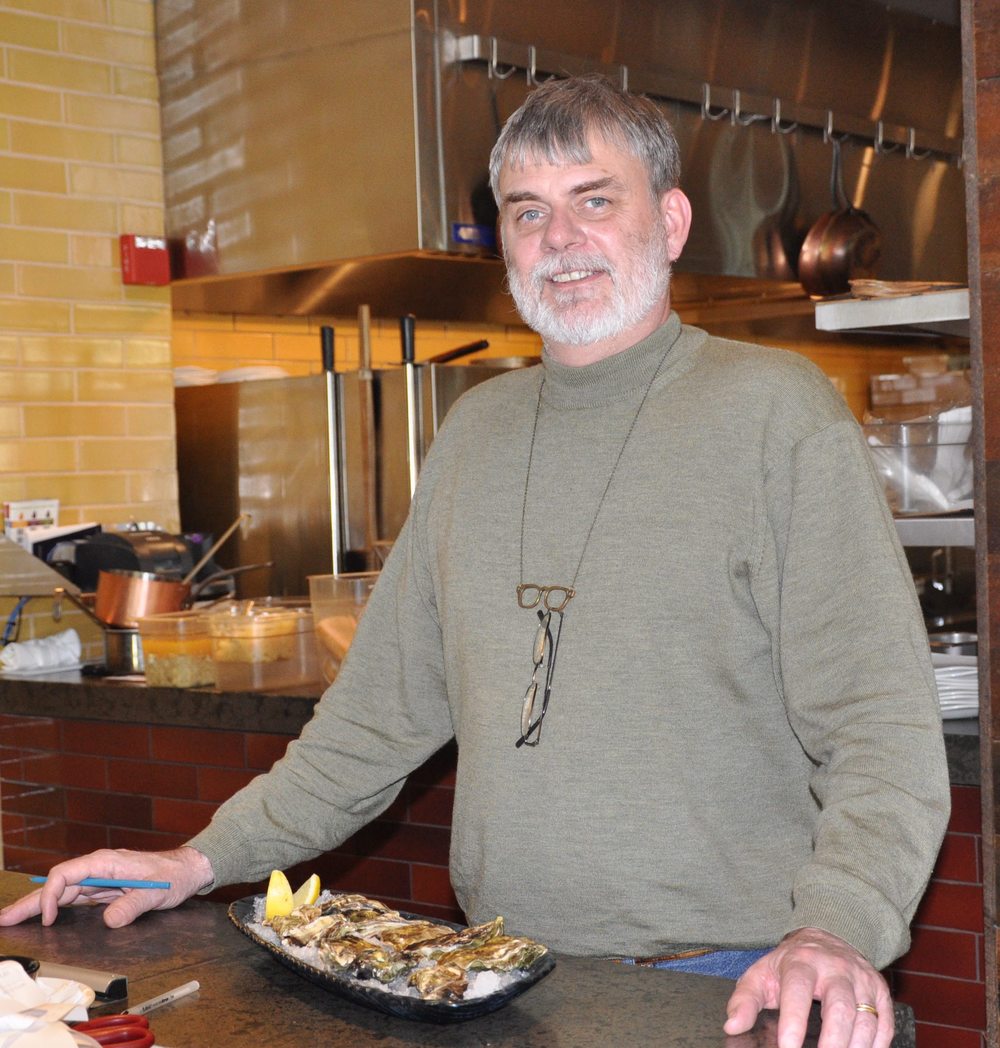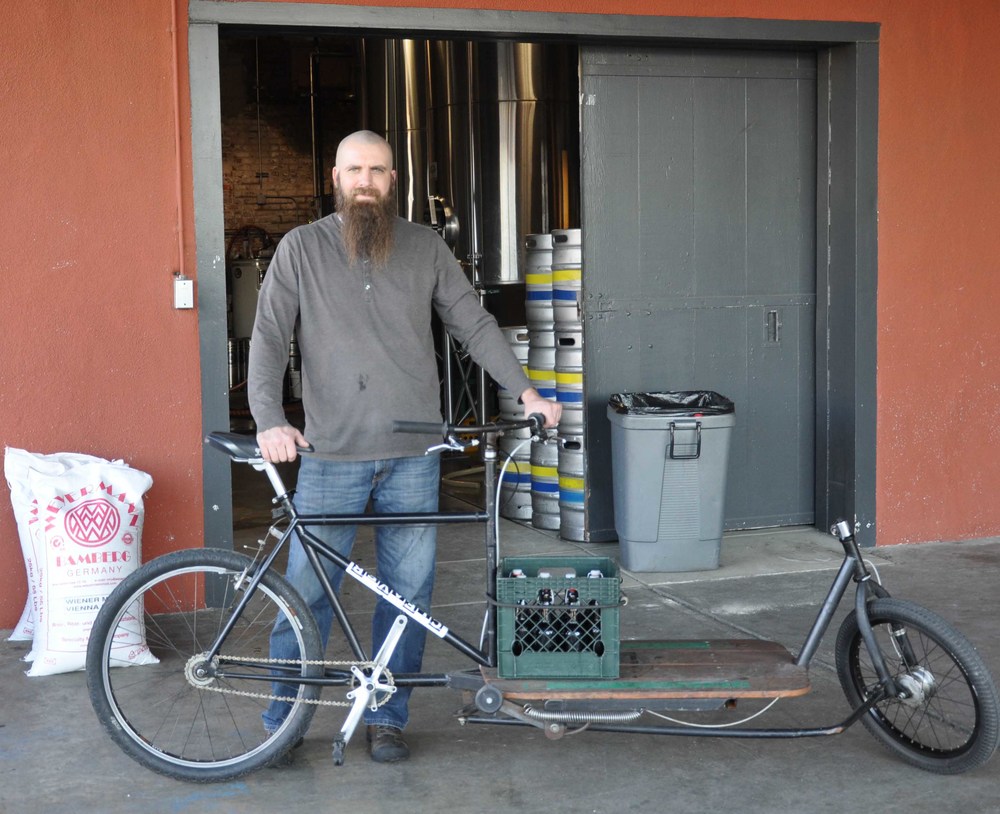this piece was originally published January 12 in Seedstock, the blog for sustainable agriculture focusing on startups, entrepreneurship, technology, urban agriculture, news and research.
 Chef/Owner Rick Hackett of Bocanova in Oakland, CalifThis week we were inspired by a conversation about local sourcing with Chef/Owner Rick Hackett of Bocanova in Oakland, Calif. Rick is dedicated to buying local for his restaurant. “For the world to survive, we must become more and more local, which means more seasonality,” he explains. “The more you keep things within four hours or 200 miles, the more you keep it in the community, and that you can feel good about.”
Chef/Owner Rick Hackett of Bocanova in Oakland, CalifThis week we were inspired by a conversation about local sourcing with Chef/Owner Rick Hackett of Bocanova in Oakland, Calif. Rick is dedicated to buying local for his restaurant. “For the world to survive, we must become more and more local, which means more seasonality,” he explains. “The more you keep things within four hours or 200 miles, the more you keep it in the community, and that you can feel good about.”
For a chef, finding farmers and ranchers with great, responsibly produced local products is getting easier all the time. But can you get what you want delivered? And what if you’re off the beaten path, or your needs aren’t consistent? We’ve gotten to a place where the mind (and the wallet) is willing, but the logistics are weak.
We hear over and over that direct sales are best for farmers, but it’s not always such a great deal. There’s nothing free about trucking goods around and sitting in traffic, or spending your “day off” standing at a market. Middlemen have gotten a bad reputation from unfairly squeezing both sides of the equation, but there’s nothing inherently wrong with paying someone for the valuable services of transportation and coordination.
“I think a lot of farms would benefit from somebody who would take over the distribution angle. One of the problems is that the more time the farmer is out delivering to me, the less time he is on the farm,” says Rick.
New, alternative delivery models are happening. Polyface Farm in Virginia has created Metropolitan Buying Clubs. Drop-off sites within four hours of the farm, often at a home, are put on a weekly schedule. Orders can vary each week, but to qualify for drop-off, each site must maintain a $1,000 weekly sales average to make the arrangement a good investment for the farm. The cost of delivery to the Buying Club consumers is a flat 28 cents per pound, which covers the cost of the truck, the driver, and the administrative time.
A similar model to the buying clubs, but without a set schedule, are food “hives” in France. La Ruche Qui Dit Oui (literally, ‘the hive that says “yes”’) is a business that helps set up “hives” or local businesses that serve as hubs for locally produced food. Once the “hive” has been created and meets local hygiene codes, farmers connect with members of the hive. There are no ongoing subscriptions, and the members come to collect their goods at the central “hive” or hub. The coordination is all done online. Thresholds are set by the producers, such as 100 kg of apples at a set price. When enough members have committed to buying apples, and the 100 kg threshold is met, then the transaction is completed. The farmer brings the apples to the hub, and members come to collect their orders.
Chef Rick is working on a solution for his own restaurant. It’s a drop box system where other farmers can “drop” their produce off at a walk-in located at one of his suppliers, All Star Farms. Then the farmer, Marty Jacobson, would bring it all down to him at Bocanova. Each farm would invoice Bocanova, and the invoices would be delivered with the produce. The problem is getting all the parts coordinated so it actually can work on a schedule.
Not just a boost for buyers and sellers, finding new ways to move products within urban-suburban-rural food sheds helps us reshape a product’s carbon footprint. Any way possible to spread the carbon load minimizes the footprint of any given product or person. It doesn’t make sense for one worker, in one car, to travel upwards of 20, 50 or 75 miles from an outlying exurb or rural area, then to have a delivery vehicle make a dedicated run to and from that same region to the same restaurant. Know someone working in the city that would like to make a little extra cash? Have restaurant wait staff that live out of town and would like to take on a little foraging? Maybe produce is the next great carpool partner.
 Adam Lamoreaux of Linden St. Brewery, preparing a deliveryFor those searching for how they can make a positive impact for the good food movement, we’ve got a job for you. Freelance forager, farm to kitchen runner — call it what you want, but we need more ways to connect growers to buyers. It may not sound very romantic, but it’s a missing link in the farm to table chain.
Adam Lamoreaux of Linden St. Brewery, preparing a deliveryFor those searching for how they can make a positive impact for the good food movement, we’ve got a job for you. Freelance forager, farm to kitchen runner — call it what you want, but we need more ways to connect growers to buyers. It may not sound very romantic, but it’s a missing link in the farm to table chain.
Chef Rick points out that foraging could have other benefits. “It could be an entry level position for somebody who wants to get on the farm, because you spend a little bit of time on the farm and then a couple of days for deliveries. That way you get to learn that connection between the farm and the restaurateur. And every chef is looking for something different. You get to learn the idiosyncrasies of what cooks are all about.”
Have you set up alternative delivery models for your farm or business? Tell us about it.
Chef Rick couldn’t resist a shout-out to a few of his favorite sources. At Bocanova, he uses pork from Prather Ranch, eggs from Rolling Oaks up in the Sierra foothills, oysters from Drakes Bay Oyster Company (which is run by the Lunny’s, who also have very nice tasting grass-fed beef cattle that they raise on Lunny Farms), and fresh beer delivered daily by bicycle from Linden Street Brewery in Oakland.
_____________________
Submit Your Question(s) for Next Week!
You can submit your questions via email, facebook or Twitter.
_____________________
About Alisha & Polly’s company: Polish Partnerships
Polish is a branding and communications company for the new gastroconomy. By creating strong partnerships with food and beverage producers, hospitality groups and industry innovators, we go the extra distance, transforming hopes, dreams and expectations into tangible, sustainable and polished realities.
